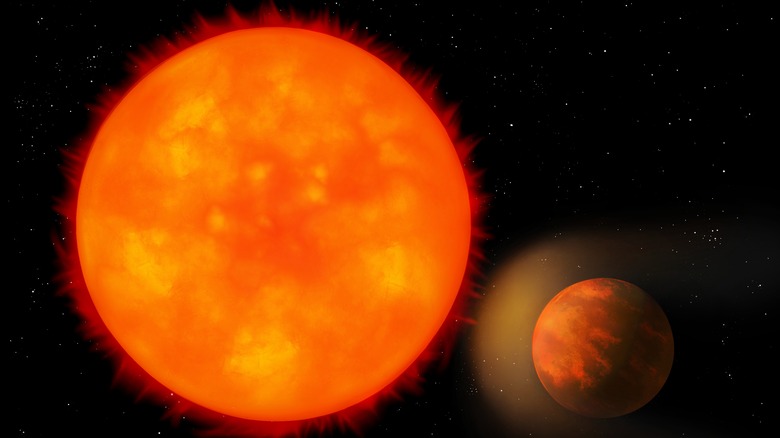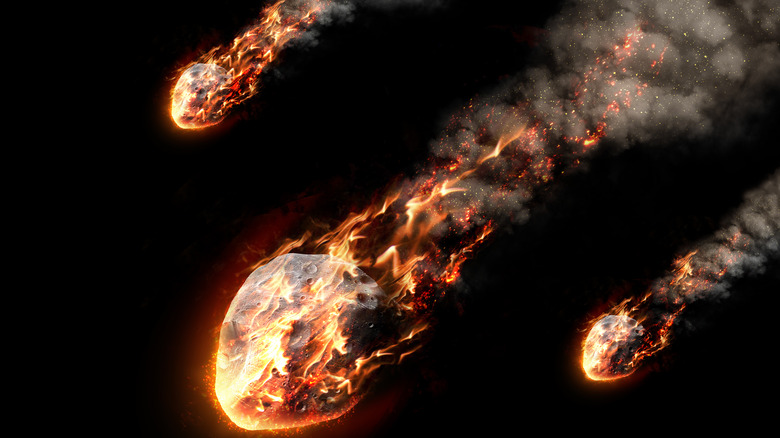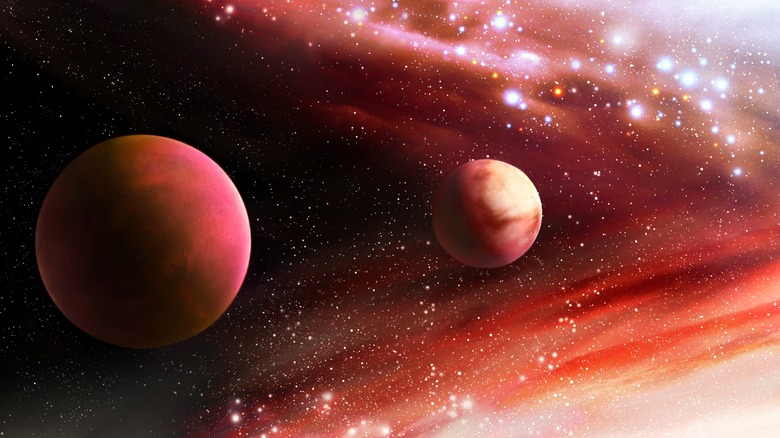Why Exoplanet 'Hot Jupiter' Would Not Make A Great Home For People
Have you ever wondered what it might be like to live on another planet, such as Mars? What about Jupiter? Even better, what about the exoplanet OGLE-TR-56b, aka "hot Jupiter"? As you might expect from the name, this hot, Jupiter-like planet is not exactly somewhere you would want to call home sweet home. But what exactly makes "hot Jupiter" uninhabitable? Let's take a look.
Exoplanet OGLE-TR-56b is the only exoplanet orbiting its star that has been found so far. According to NASA, this gas giant, discovered in 2002, has a mass only slightly larger than that of Jupiter. The main difference between these two planets is the distance to their star. While Jupiter takes nearly 12 years to orbit our Sun (via Universe Today), "hot Jupiter" completes its orbit in just 1.2 days. According to an equation known as Kepler's 3rd Law, the time it takes a planet to orbit its star is related to how close it is to that star. The shorter the time, the closer the orbit (via Space.com). This means that OGLE-TR-56b is extremely close to its star, causing it to heat up to extreme temperatures.
'Hot Jupiter' has rain showers made of molten iron
While OGLE-TR-56b may be extremely hot, that doesn't necessarily make it uninhabitable, right? After all, heat resistant spacesuits can already protect astronauts from the intense heat of the Sun, and future spacesuits and air conditioning could make living indoors a relaxing experience even on the hottest planets. Unfortunately, living on "hot Jupiter" would require more than just a heat-proof suit and a thermostat.
OGLE-TR-56b is so intensely hot that iron is able to melt and evaporate off its surface. Just like how water evaporates and eventually falls back down to the surface as rain, iron on OGLE-TR-56b does the same thing (via The Harvard Gazette). This results in rain showers of molten iron falling down to the surface. If you thought the blazing heat was bad on Earth, just wait till you get caught in iron rain on "hot Jupiter." Interestingly, iron rain is not exclusive to OGLE-TR-56b. In fact, according to Sun.org, astrophysicists have already found liquid iron clouds on other planets.
The science behind hot gas giants is a bit of a mystery
It turns out that OGLE-TR-56b is a bit of a mystery to scientists. You see, gas giants aren't normally found so close to their star. What's even more puzzling, OGLE-TR-56b is not the only "hot Jupiter" out there, and they are far from rare. According to NASA, "hot Jupiter's" are fairly common, but the process by which they are formed is not yet known. The reason why scientists are so confused about the existence of "hot Jupiter's" has to do with how close they can be found to their host star. If a gas giant were formed that close to its star from the beginning, the intense heat would burn away its atmosphere. In order for a 'hot Jupiter' to exist, then, it needs to be formed away from the star.
There are several theories as to how a "hot Jupiter" ends up so close to its host star. According to Smithsonian Magazine, the most popular theory is that these gas giants are formed near their host stars, and then pulled closer by gravity. Another theory states that they form farther away, but interactions with gas and dust slowly bring them inwards. Whatever the cause, these "hot Jupiter's" are not the type of places you would want to spend summer vacation.


